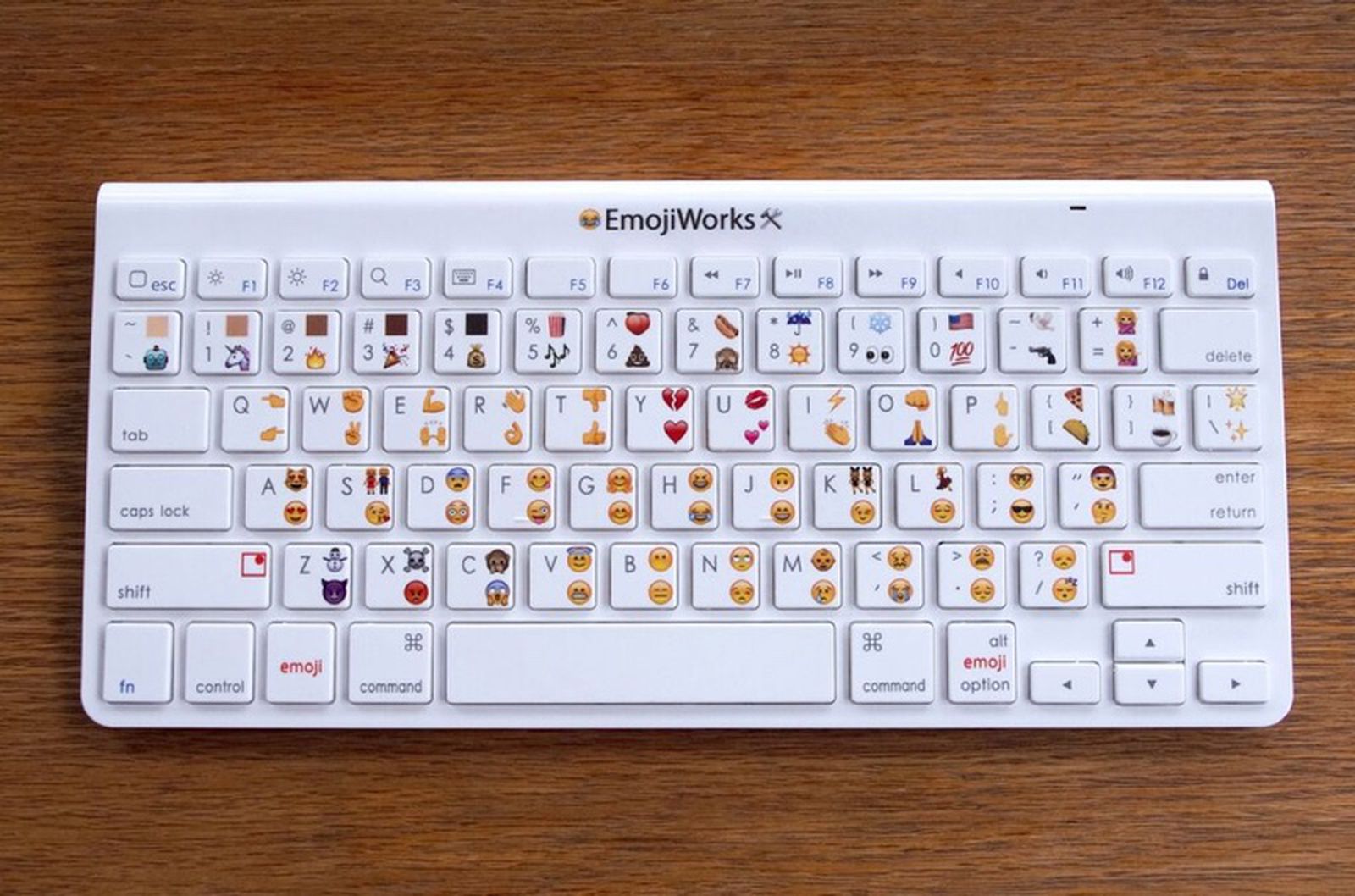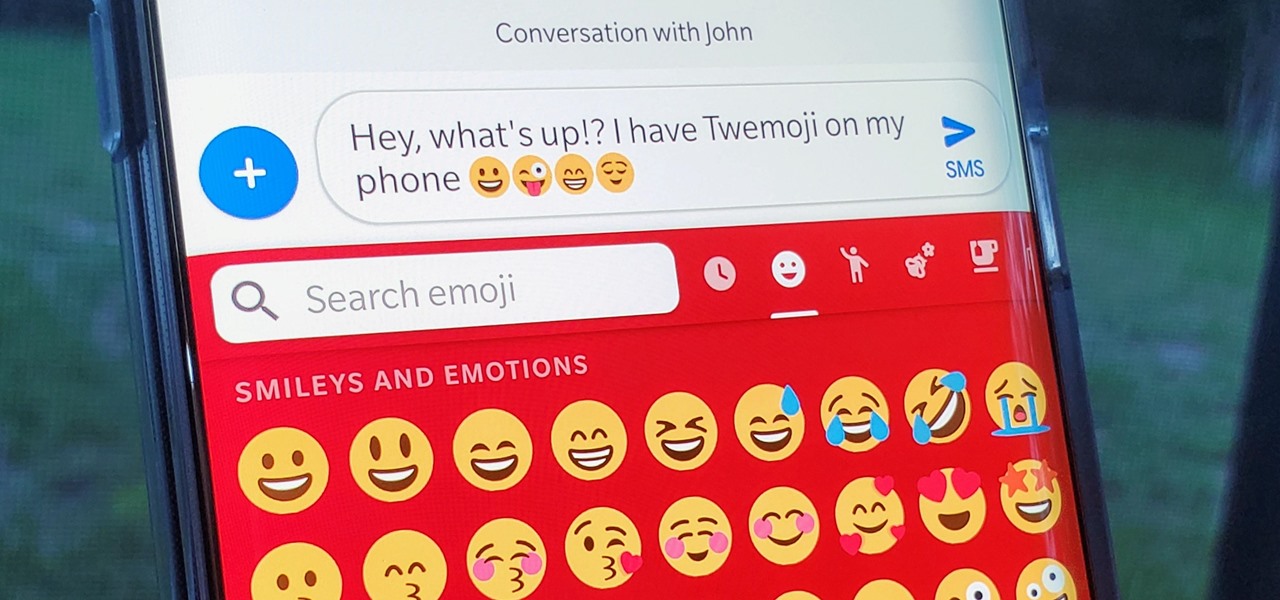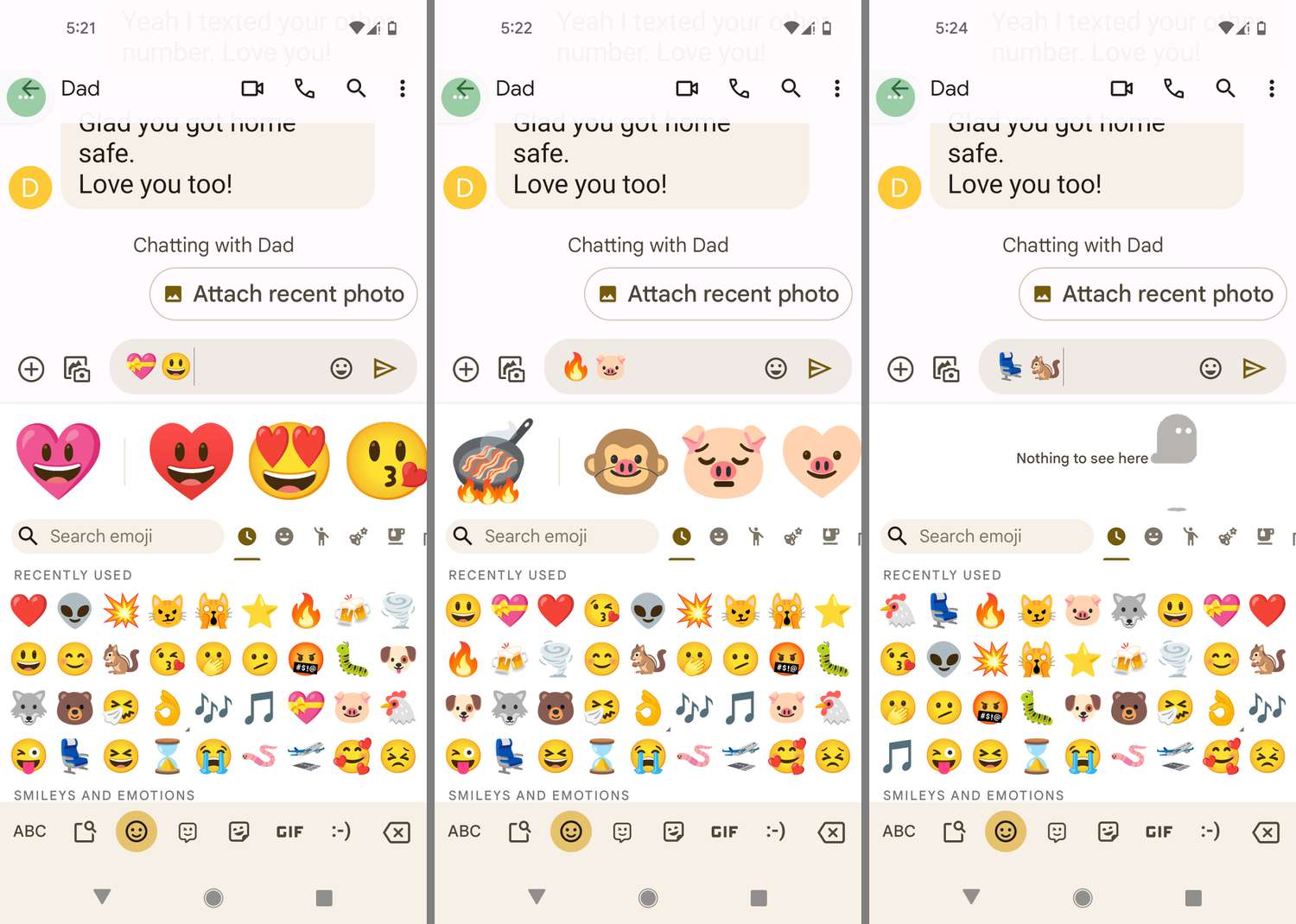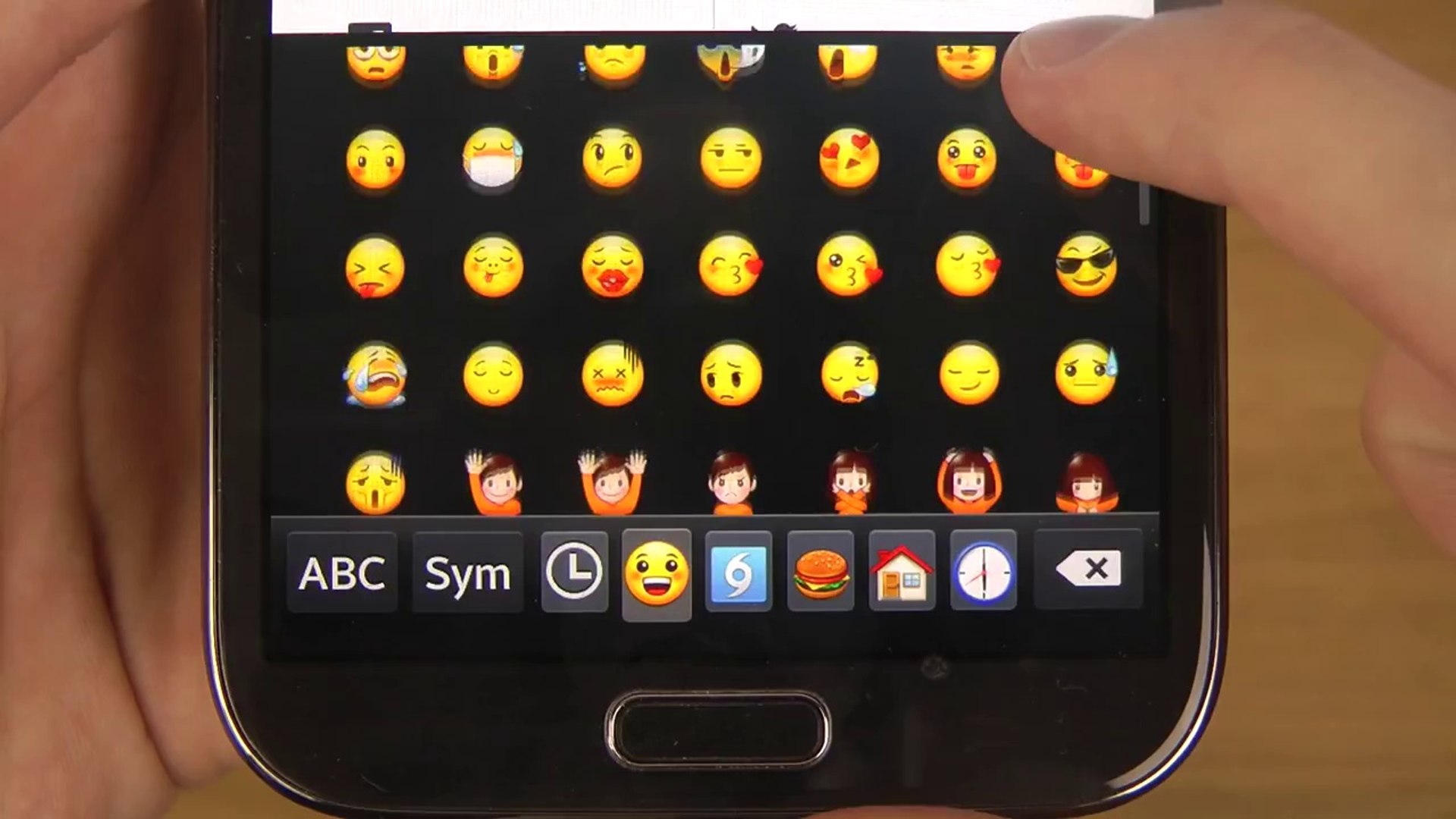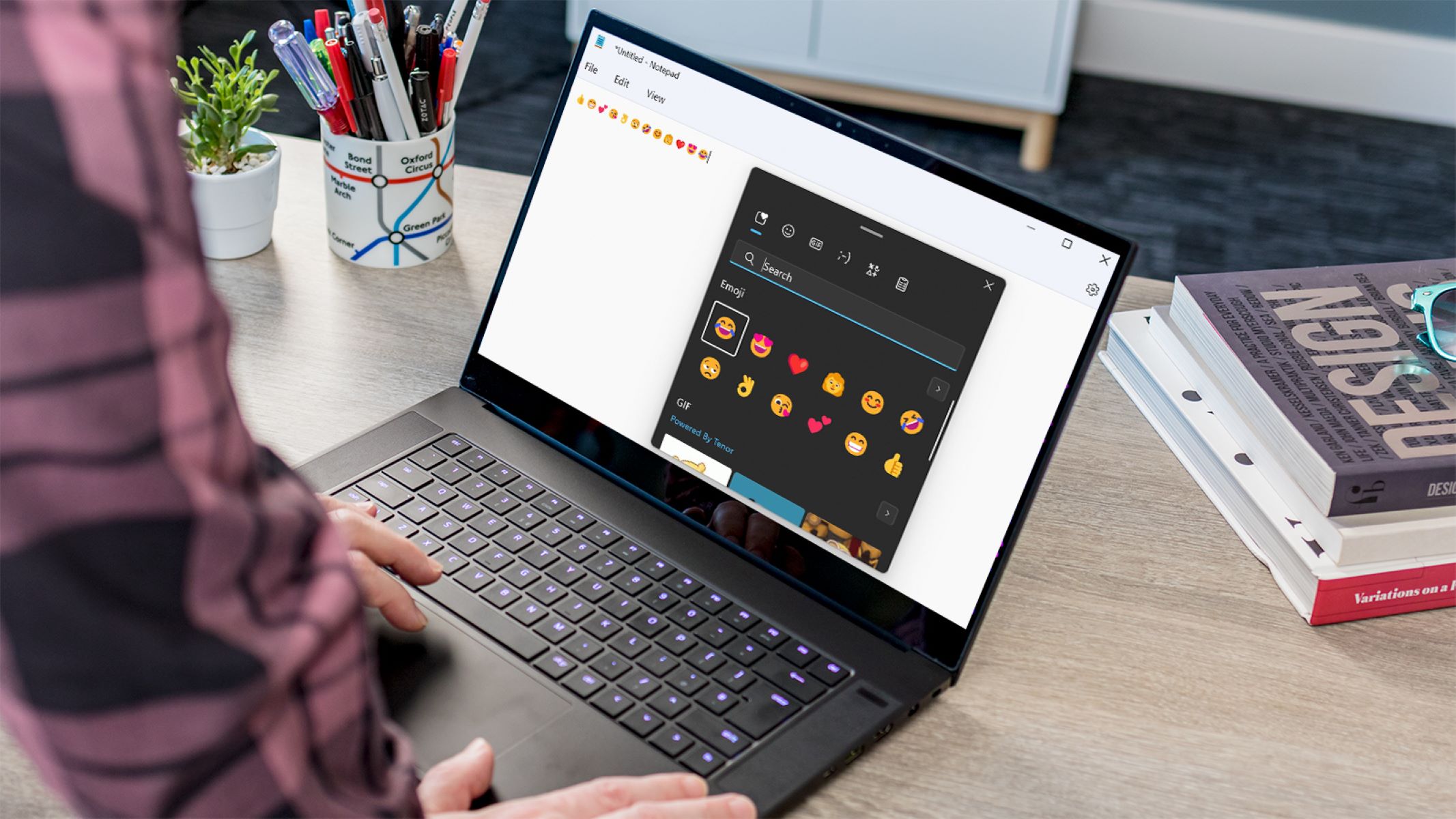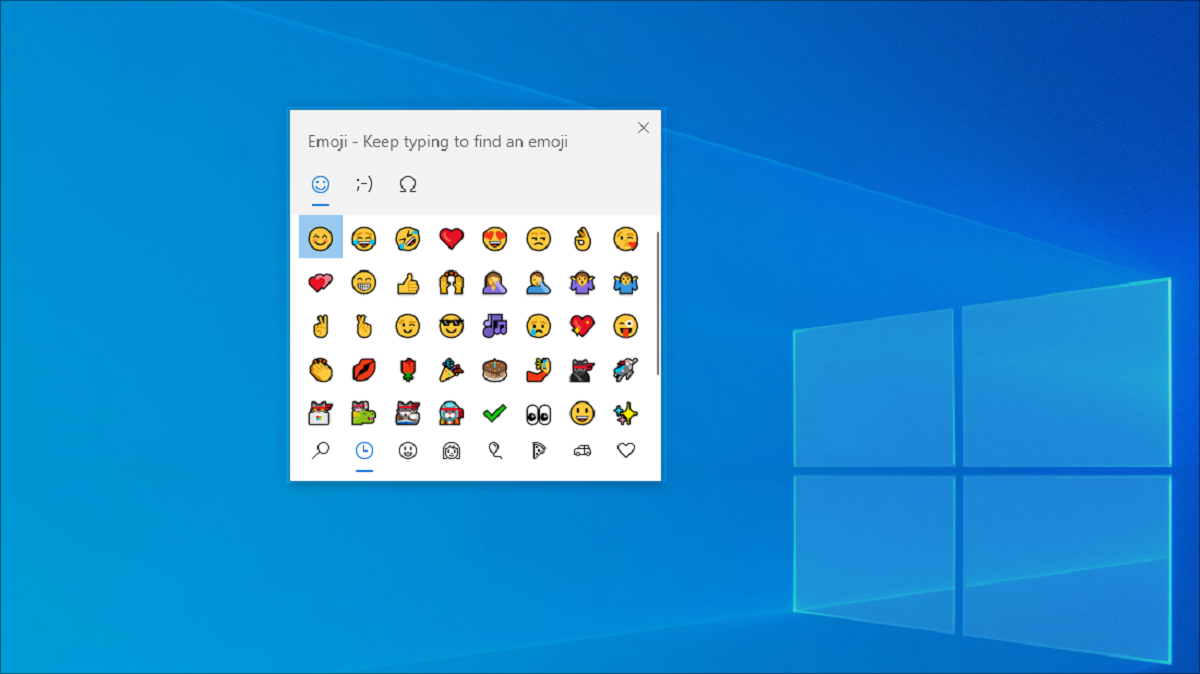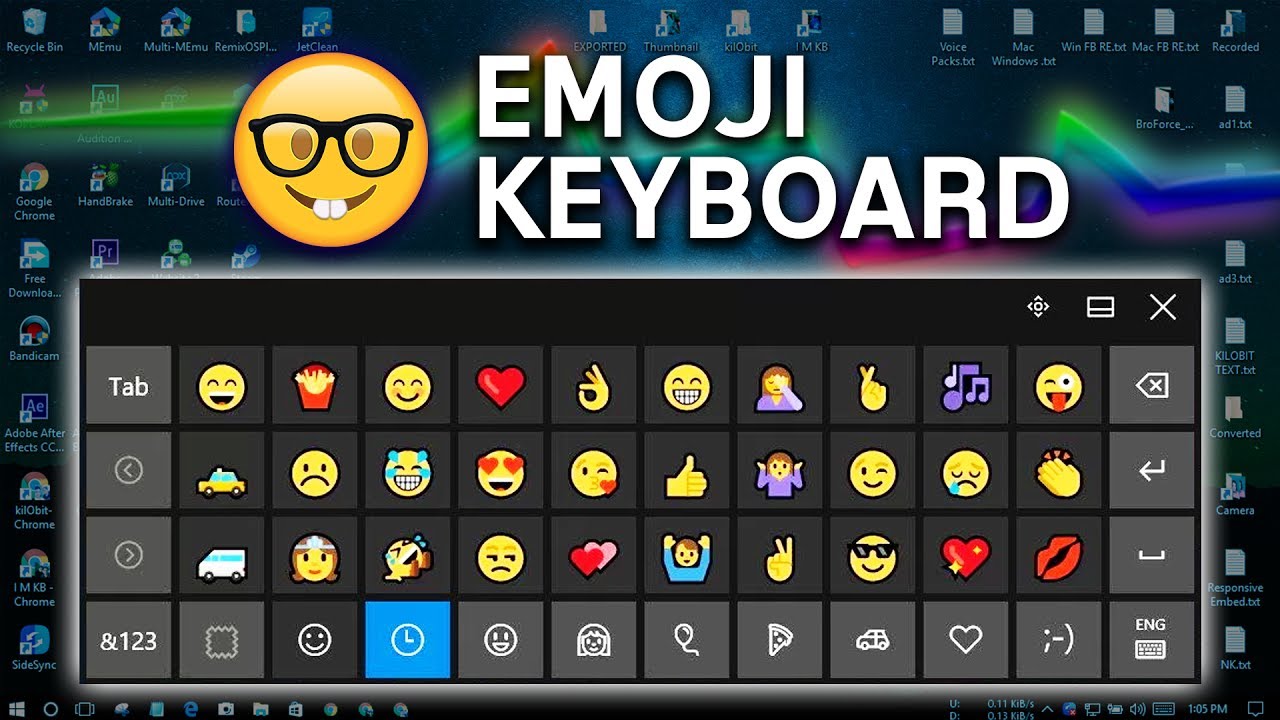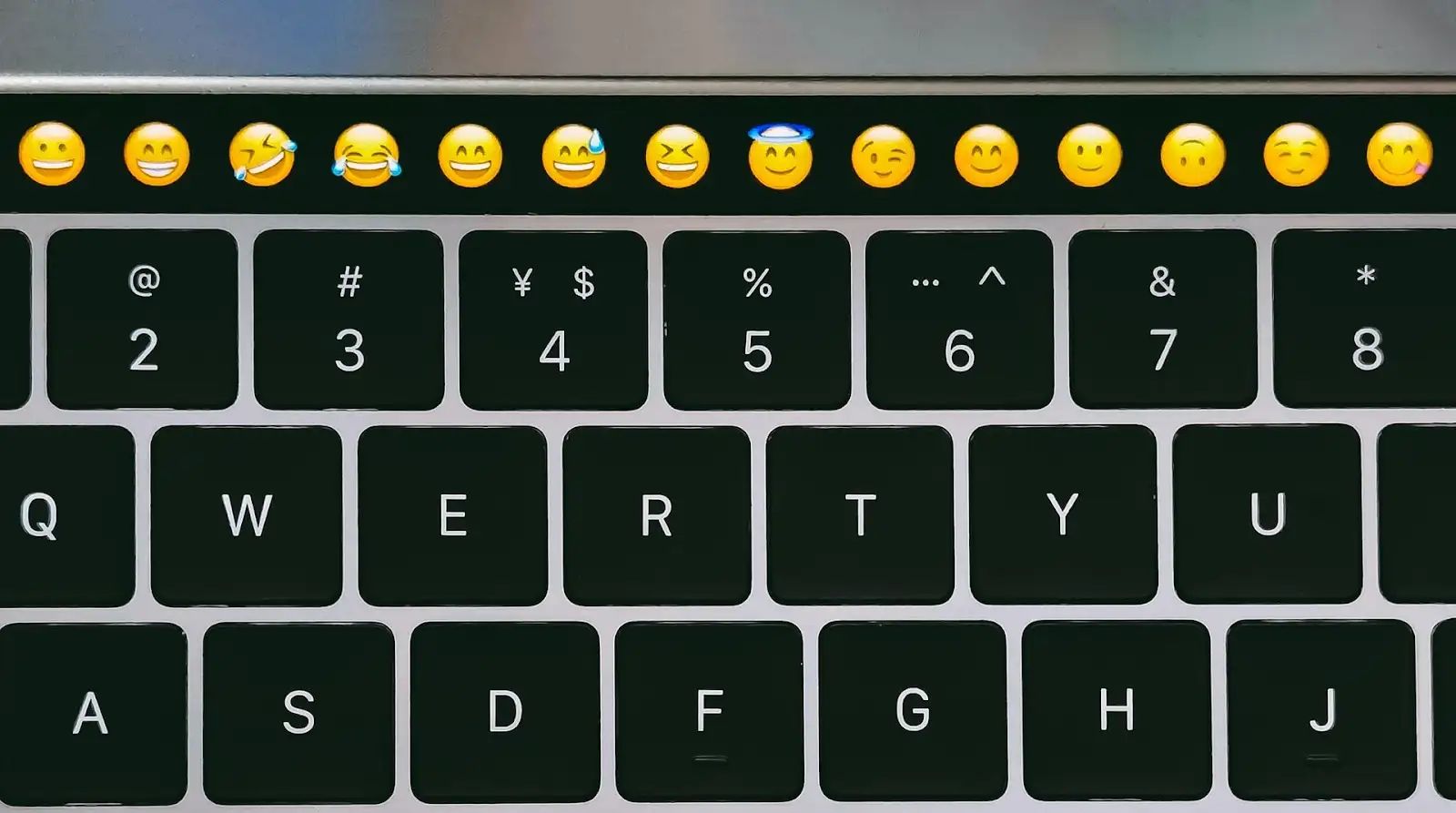Introduction
Emojis have become an integral part of our digital communication, adding a fun and expressive element to our messages and social media posts. These small, colorful icons allow us to convey emotions, reactions, and ideas in a visual and engaging way. Whether you’re sending a text message, posting a status update, or commenting on a friend’s photo, emojis can help you convey your feelings and add a personal touch to your digital conversations.
In this article, we will explore the world of emoji keyboards and how you can use them to enhance your online communication. We’ll cover everything from accessing the emoji keyboard on different devices to finding the right emoji for any situation. By the end of this article, you’ll be equipped with the knowledge and skills to use emojis effectively and creatively.
Emoji keyboards are a collection of various icons and symbols that represent a wide range of emotions, objects, activities, and concepts. They provide a visual way to express ourselves beyond words, making our text-based conversations more lively and engaging. From smiling faces and sad faces to animals, food, and transportation, emoji keyboards offer a vast selection of icons to choose from.
Using an emoji keyboard can add a whole new dimension to your digital communication. It allows you to instantly convey emotions and reactions, making your messages more personal and relatable. Instead of typing out a lengthy explanation of how you feel, you can simply select an emoji that captures your sentiment in a single image. Whether you want to show your excitement, convey amusement, or express empathy, emojis can help you do it with a simple click or tap.
In the following sections, we will explore how to access the emoji keyboard on different devices and platforms, as well as provide tips and shortcuts to make your emoji usage even more efficient. So, let’s dive in and discover the wonderful world of emojis and how they can enhance your digital communication experience.
What is an Emoji Keyboard
An emoji keyboard is a virtual keyboard or a feature within a keyboard that allows users to access and use a wide range of emojis. Emojis are small icons or symbols that represent various emotions, objects, activities, and concepts. They have become a popular means of visual communication in digital conversations, adding depth and personality to our messages.
Emoji keyboards are designed to make it easy for users to find and insert emojis into their texts, emails, social media posts, and other digital communications. They provide a convenient way to express emotions and reactions without relying solely on written words. Instead of describing how you feel, you can simply select an emoji that conveys your emotion in a visual and relatable way. This makes conversations more expressive and engaging, allowing you to effectively communicate even in the absence of facial expressions and body language.
Emoji keyboards typically include a vast collection of emojis organized into different categories. These categories may include smileys and people, animals and nature, food and drinks, activities, objects, symbols, and more. Each category contains a range of emojis that represent specific emotions, objects, or ideas related to the category. For example, the smileys and people category may include emojis depicting various facial expressions, gestures, and professions.
To use emojis from an emoji keyboard, you can either click or tap on the desired emoji on a touch-enabled device, or simply type the corresponding short code or keyword for the emoji on a computer or device with a physical keyboard. Once you select an emoji, it will be inserted into your text, giving it a visual flair and adding depth to your communication.
Emoji keyboards have become widespread and are available on various devices and platforms. They can be found on smartphones and tablets, as well as on computers and web applications. The availability and functionality of emoji keyboards may vary depending on the device and operating system you are using. However, most modern devices offer an emoji keyboard or a way to access emojis within the regular keyboard interface.
In the next section, we will explore how to access the emoji keyboard on different devices, including mobile devices and computers, so you can start using emojis in your digital conversations and make your messages more expressive and fun.
How to Access the Emoji Keyboard
Accessing the emoji keyboard is a straightforward process, and it can be done on various devices such as mobile phones, tablets, and computers. Depending on the device and operating system you are using, there are different methods to access the emoji keyboard. Let’s explore some of the common ways to access emojis on different platforms.
Using Emoji on Mobile Devices:
1. Native Keyboard: Most modern smartphones and tablets have a built-in emoji keyboard that can be accessed directly from the device’s native keyboard. To access the emoji keyboard, open any app that requires text input, such as your messaging app or social media platform. When the keyboard appears, look for the emoji icon usually located near the space bar or within the keyboard itself. Tap on the emoji icon to switch to the emoji keyboard.
2. Keyboard App: If your device doesn’t have a native emoji keyboard or you want more customization options, you can download a third-party keyboard app that offers a wide range of emojis. Some popular keyboard apps include Gboard, SwiftKey, and Emoji Keyboard. After downloading and installing the app, follow the instructions to enable it as your default keyboard. Once activated, you can access the emoji keyboard by tapping on the emoji icon on the keyboard.
Using Emoji on Computers:
1. Operating System Emoji Picker: On Windows and macOS computers, you can access the emoji picker to insert emojis into your text. On Windows, you can use the “Win + .” or “Win + ;” keyboard shortcuts to open the emoji picker. On macOS, use the “Ctrl + Cmd + Space” shortcut to open the emoji picker. From there, you can browse and select emojis to insert into your text.
2. Web-based Emoji Tools: If you’re using a web-based application or platform, such as social media websites or email services, you can often access emojis by using a built-in emoji tool. Look for a smiley face icon or a “Insert Emoji” button within the text editor. Clicking on the icon or button will open a panel of emojis that you can choose from. Simply click on an emoji to insert it into your text.
3. Keyboard Shortcuts: Another way to access emojis on a computer is by using keyboard shortcuts. For example, on Windows, you can press “Win + .” or “Win + ;” to open the emoji picker, and then use arrow keys to navigate through the emojis and press Enter to insert the selected emoji. On macOS, you can use the “Ctrl + Cmd + Space” shortcut to open the emoji picker, and then navigate and insert emojis using the mouse or arrow keys.
Now that you know how to access the emoji keyboard on different devices, you can start adding a personal and expressive touch to your digital conversations. In the following sections, we will explore how to use emojis effectively, find the right emoji for any situation, and even customize the appearance of emojis. So, keep reading to expand your emoji knowledge and enhance your communication skills.
Using Emoji on Mobile Devices
Using emojis on mobile devices is quick and easy, thanks to the built-in emoji keyboards available on most smartphones and tablets. These keyboards allow you to access and insert emojis into your text messages, social media posts, and other digital communications. Let’s explore how to use emojis on mobile devices and make your conversations more expressive and fun.
1. Open the Native Keyboard: To access the emoji keyboard on mobile devices, start by opening an app that requires text input, such as your messaging app or social media platform. When the keyboard appears on your screen, look for the emoji icon. On most keyboards, this icon is located near the space bar or within the keyboard itself.
2. Switch to Emoji Keyboard: Once you’ve located the emoji icon, tap on it to switch from the regular keyboard to the emoji keyboard. This will replace the standard keys with a wide range of emojis organized into different categories. You can now browse through the various categories and find the emoji that best represents your thoughts or emotions.
3. Select an Emoji: To insert an emoji into your text, simply tap on the desired emoji. The selected emoji will then be inserted into your message or post. If you want to include multiple emojis in your text, you can switch back to the regular keyboard by tapping on the keyboard icon (usually located next to the emoji icon). This will allow you to type additional text before switching back to the emoji keyboard and selecting more emojis.
4. Use Emoji Shortcodes: Some mobile devices also support emoji shortcodes or keywords, which allow you to quickly insert emojis by typing specific combinations of characters. For example, typing “:)” (colon followed by a closing parentheses) will automatically convert into the smiling face emoji. You can find a list of commonly used emoji shortcodes online or experiment with different combinations to discover new ones.
5. Customize Emoji Appearance: On some mobile devices, you may have the option to customize the appearance of certain emojis, such as changing the skin tone. To do this, tap and hold on an emoji to reveal a popup menu with different skin tone options. Choose the desired skin tone and release your finger to select it. This allows you to personalize your emojis and make them more representative of yourself or the people you are referring to in your messages.
Remember, emojis are meant to enhance your digital communication and make it more engaging. However, it’s important to use them appropriately and in moderation. Be mindful of the context and the recipient’s preferences when using emojis. Using too many emojis or using them inappropriately may dilute the message or convey unintended meanings. Understanding your audience and the tone of the conversation will help you use emojis effectively and avoid any misinterpretations.
In the next section, we will explore how to use emojis on computers and provide tips on finding the right emoji for any situation. So, let’s continue our emoji journey and discover more ways to enrich your digital conversations.
Using Emoji on Computers
While emojis are often associated with mobile devices, you can also use them on computers to add a fun and expressive touch to your digital communications. Whether you’re using a Windows or macOS computer, there are several ways to access and use emojis. Let’s explore how to use emojis on computers and make your messages more visually appealing.
1. Operating System Emoji Picker: Both Windows and macOS computers have built-in emoji pickers that allow you to select and insert emojis into your text. On Windows, you can open the emoji picker by pressing the “Win + .” (period) or “Win + ;” (semicolon) keyboard shortcuts. On macOS, the emoji picker can be accessed by pressing “Ctrl + Cmd + Space” keys simultaneously. Once the emoji picker opens, you can browse through the available emojis and select the one you want to use.
2. Web-based Emoji Tools: If you’re using a web-based application or platform that doesn’t offer a built-in emoji picker, you can still use emojis by leveraging web-based emoji tools. Many websites provide emoji tools that allow you to insert emojis into your text. These tools often appear as a smiley face icon or a “Insert Emoji” button within the text editor. Clicking on the icon or button will open a panel of emojis that you can choose from. Simply click on an emoji to insert it into your text.
3. Keyboard Shortcuts: Another way to use emojis on computers is by utilizing keyboard shortcuts. These shortcuts allow you to quickly insert commonly used emojis without accessing the full emoji picker. For example, on Windows, you can press “Win + .” or “Win + ;” to open the emoji picker and then use the arrow keys to navigate through the emojis. Press Enter to insert the selected emoji into your text. On macOS, you can use the “Ctrl + Cmd + Space” shortcut to open the emoji picker and navigate and insert emojis using the mouse or arrow keys.
4. Copy and Paste: If you have a specific emoji you want to use and know its code, you can also copy and paste it into your text. Emoji codes are specific sequences of characters that represent a particular emoji. You can find emoji codes online or use a character map tool to locate the emoji you want and copy its code. Then, simply paste the code into the desired location in your text, and it will be displayed as the corresponding emoji.
Using emojis on computers allows you to communicate with visuals and add an extra layer of emotion to your messages. Whether you’re writing an email, chatting on a messaging platform, or engaging on social media, emojis can help you express yourself in a more engaging and relatable way.
In the next section, we will explore popular emoji categories and provide tips on finding the right emoji for any situation. So, keep reading to expand your emoji repertoire and bring more fun and creativity into your digital communication.
Popular Emoji Categories
Emojis cover a wide range of emotions, objects, activities, and concepts, making it easier for us to express ourselves visually in our digital communication. To facilitate easy navigation and selection, emojis are typically categorized into different categories. Let’s explore some of the popular emoji categories and the types of emojis they encompass.
1. Smileys and People:
This category includes emojis representing various facial expressions, gestures, and people. It contains a range of smiley faces, such as happy faces, sad faces, laughing faces, and faces with different emotions. Additionally, you’ll find emojis depicting people doing various activities, such as dancing, exercising, working, and more.
2. Animals and Nature:
In this category, you’ll find emojis representing a wide variety of animals, including cats, dogs, birds, and insects. It also includes emojis for different types of weather, plants, and other elements of nature, such as flowers, trees, sun, moon, and rainbows. Whether you want to convey your love for animals or describe the current weather, this category has you covered.
3. Food and Drinks:
Food lovers rejoice! The food and drinks category includes emojis representing a vast array of food items and beverages. From pizza and hamburgers to desserts and beverages, you’ll find emojis for almost every type of food you can imagine. This category allows you to quickly express your cravings, food preferences, or the delicious meal you’re enjoying.
4. Activities:
Emojis in the activities category are centered around different hobbies, sports, and recreational activities. Whether it’s playing soccer, surfing, going to the gym, or playing musical instruments, you’ll find emojis that depict various activities. This category is great for expressing your interests, sharing your favorite hobbies, or conveying the excitement of engaging in a particular activity.
5. Objects:
The objects category covers emojis for a wide range of objects and items. You’ll find emojis representing everyday objects like phones, clocks, household items, and office supplies. It also includes emojis for transportation, such as cars, bicycles, planes, and trains. This category is useful for adding visual elements to your messages or posts when referencing specific objects or activities.
6. Symbols:
Symbols provide a way to represent concepts, ideas, or emotions in a concise manner. This category includes emojis for various symbols, such as hearts, arrows, stars, musical notes, and mathematical symbols. Symbols can be used to convey love, emphasize a point, or add a touch of creativity to your digital communication.
These are just a few examples of popular emoji categories, and there are many more to explore. Whether you want to express your emotions, describe a situation, or simply add a playful touch to your messages, emojis offer a wide range of options to choose from.
In the next section, we will provide tips on finding the right emoji for any situation and making your emoji usage even more effective. So, stay tuned to learn how to use emojis creatively and enhance your digital communication.
Finding the Right Emoji
With hundreds of emojis to choose from, finding the right one for a specific situation can sometimes be a challenge. However, there are a few strategies you can use to help you find the perfect emoji to express your thoughts or emotions. Let’s explore some tips for finding the right emoji and making your digital communication more effective.
1. Understand Emoji Meanings:
To use emojis effectively, it’s essential to understand their meanings. Take the time to familiarize yourself with the different emojis and what they represent. This will help you choose an emoji that accurately conveys your intended message. Keep in mind that some emojis may have multiple interpretations, so consider the context and choose accordingly.
2. Use Emoji Categories:
As we mentioned earlier, emojis are categorized into different categories. Utilize these categories to narrow down your search for the right emoji. If you’re describing an emotion, explore the smileys and people category. If you’re discussing food, check out the food and drinks category. Using relevant categories will help you find emojis that align with the topic or emotion you want to express.
3. Search for Keywords:
If you have an idea of the emoji you want but can’t locate it in the category you’re exploring, use keywords to search for it. Many emoji keyboards and online resources allow you to enter keywords to find specific emojis. For example, if you’re looking for a cat emoji, simply type “cat” in the search bar, and relevant emojis will be displayed.
4. Explore Related Emojis:
When you find an emoji that partially represents what you want to express, it’s worth exploring other related emojis that might better capture your intended message. Many emojis have variations or similar alternatives that convey similar emotions or concepts. Navigating through related emojis can offer more options and help you find the perfect match for your message.
5. Combine Emojis:
Sometimes, a single emoji may not fully capture the complexity of your message or idea. In such cases, consider combining multiple emojis to convey the desired meaning. For example, you could use the thumbs up emoji along with a smiling face emoji to express enthusiasm or approval. Experimenting with different combinations can help you create a unique visual representation of your message.
By using these strategies, you can enhance your emoji usage and ensure that your emojis accurately reflect your intended thoughts or emotions. Don’t be afraid to explore different emojis and get creative with your choices to make your digital communication more engaging and fun.
In the next section, we will discuss special characters and symbols that can be used alongside emojis to further enhance your communication. So, let’s discover more ways to add depth and creativity to your messages and posts.
Special Characters and Symbols
In addition to emojis, there are a plethora of special characters and symbols that can be used to enhance your digital communication. These symbols can add a touch of creativity, emphasize a point, or provide visual elements that complement your text. Let’s explore some popular special characters and symbols that you can incorporate into your messages and posts.
1. Emoticons:
Emoticons are combinations of keyboard characters that resemble facial expressions and emotions. Common examples include the smiley face 

2. Punctuation Marks:
Punctuation marks, such as exclamation marks (!), question marks (?), and ellipses (…), can be used to convey tone and emphasize a sentence. They provide visual cues to the reader on how the sentence should be interpreted. For example, a statement followed by an exclamation mark indicates excitement or enthusiasm, while a statement followed by an ellipsis may imply suspense or an unfinished thought.
3. Arrows:
Arrows are commonly used to indicate direction, movement, or marking important points. Whether you need to express a sense of progression, emphasize a specific element, or direct attention, arrows can be a helpful visual tool. From simple arrow symbols (<, >) to more elaborate arrow designs (

4. Currency Symbols:
Currency symbols, such as $, €, ¥, and £, are useful when discussing financial matters or indicating prices. Including the appropriate currency symbol can add clarity and context to your text. These symbols also allow you to represent different currencies from around the world, helping to cater to a global audience.
5. Math and Science Symbols:
Math and science symbols, such as addition (+), multiplication (×), degrees (°), and square roots (√), can be useful when discussing numerical or scientific concepts. They can help enhance clarity and accuracy in mathematical or technical discussions, providing visual cues to represent specific operations or units of measurement.
6. Music Symbols:
Music symbols, like notes (♪♫), rests (??), and treble clefs (?), can be used when talking about or expressing musical ideas. These symbols add a touch of creativity and can visually communicate the presence or importance of music within your message.
By incorporating these special characters and symbols into your digital communication, you can add extra flair and visual interest to your messages and posts. When used appropriately and selectively, they can help convey your message more effectively and creatively.
In the next section, we will discuss how to change the skin tone of emojis and make them more inclusive. So, keep reading to learn how to personalize your emojis and make your digital communication more representative.
Changing the Emoji Skin Tone
To make emojis more inclusive and representative of diversity, many emojis now offer the option to change their skin tone. This allows you to personalize the emojis to better match your own skin tone or that of the people you are referring to in your digital communication. Let’s explore how you can change the skin tone of emojis and make your emojis more inclusive.
1. Native Keyboard: On most mobile devices, the native emoji keyboard provides an easy way to change the skin tone of emojis. When you select an emoji that supports different skin tones, a popup menu with different skin tone options will appear. Tap and hold on the emoji to reveal the skin tone options, and then select the desired skin tone. The emoji will change to reflect the chosen skin tone, allowing you to use more inclusive emojis.
2. Modifier Key: On some keyboards, including the emoji keyboard on macOS computers, you can use a modifier key to change the skin tone of emojis. After selecting an emoji that supports different skin tones, press and hold the emoji. A small popup menu will appear showing different skin tone options. While still holding the emoji, use the arrow keys to navigate through the skin tone options, and then release the emoji to select the desired skin tone.
3. Emoji Shortcodes: In addition to the above methods, some emojis also support a shortcode system, where you can modify the shortcode to represent a specific skin tone. For example, a thumbs-up emoji shortcode could be modified to include a skin tone by adding a code such as :thumbsup::skin-tone-4: to represent the fourth skin tone option. This method can be useful when dealing with platforms or applications that do not provide a graphical interface for changing the emoji skin tone.
Changing the skin tone of emojis is a significant step towards inclusivity and representation in digital communication. It allows people from diverse backgrounds to personalize the emojis they use, ensuring that everyone feels reflected and included.
It’s worth noting that the default yellow emoji color is intended to be a neutral and generic representation, and using it does not imply any specific skin tone. It’s always important to be mindful of cultural contexts and sensitivities when selecting and using emojis with different skin tones.
In the next section, we will explore some emoji shortcuts and tips to make your emoji usage even more efficient and enjoyable. So, keep reading to discover handy tricks and techniques that will enhance your emoji repertoire.
Emoji Shortcuts and Tips
Using emojis efficiently and effectively can greatly enhance your digital communication. To streamline your emoji usage, here are some handy shortcuts and tips to make the process faster and more enjoyable.
1. Frequently Used Emoji:
Most emoji keyboards have a section for frequently used emojis. This section is dynamically updated based on your usage patterns, making it easy to access your most commonly used emojis without searching through multiple categories. Take advantage of this feature by intentionally using emojis, and over time, your frequently used section will contain your preferred emojis.
2. Create Emoji Shortcuts:
Did you know that you can create shortcuts for frequently used phrases or emojis on some devices? For example, you can set up a shortcut such as “omw” to be automatically replaced with the ? emoji. This can be a time-saving technique, especially if you frequently use certain emojis or need to type out repetitive phrases.
3. Predictive Text:
On mobile devices, predictive text can offer emoji suggestions as you type. This feature analyzes your text input and provides emojis that may be relevant to the context. Pay attention to the emoji suggestions and consider using them when appropriate, as it can save you time searching for specific emojis in the keyboard.
4. Experiment with Combos:
Emojis can be combined to create unique and creative expressions. Experiment with different combinations to convey complex emotions or ideas. For example, combining a thumbs-up emoji with a clapping hands emoji can indicate appreciation or applause. Don’t be afraid to get creative and find innovative ways to express yourself through emojis.
5. Be Mindful of Interpretations:
Emojis can have different interpretations based on the cultural background and context of the recipient. Be mindful of this when selecting and using emojis to avoid any misunderstandings. If you’re unsure about the meaning of a particular emoji or how it may be interpreted, take some time to research and understand its cultural connotations.
6. Use Emojis Sparingly:
While emojis are a great way to enhance your digital communication, it’s important to use them in moderation. Overusing emojis can make your messages appear cluttered and may dilute their impact. Use emojis strategically to add emphasis or convey emotions, but also balance them with clear and concise text to ensure your message is effectively delivered.
By applying these emoji shortcuts and tips, you can make your emoji usage more efficient and enjoyable. Emojis are a powerful tool for conveying emotions and adding a personal touch to your digital communication. By using them effectively, you can create more engaging and expressive messages.
In the next section, we will wrap up our exploration of emoji keyboards and provide a summary of the key points covered in this article. So, let’s wrap up and reflect on what we’ve learned about emojis and their role in digital communication.
Conclusion
Emojis have revolutionized the way we communicate digitally, allowing us to express emotions, convey ideas, and add a personal touch to our messages. In this article, we explored the world of emoji keyboards and learned how to access and use emojis on mobile devices and computers.
We discovered popular emoji categories, such as smileys and people, animals and nature, food and drinks, activities, objects, and symbols. These categories provide a wide variety of emojis to choose from, ensuring that you can find the right emoji for any situation. We also explored tips for finding the perfect emoji, including understanding their meanings, using categories, and exploring related emojis.
Additionally, we learned about special characters and symbols that can be used alongside emojis to enhance communication. These symbols, such as emoticons, punctuation marks, arrows, currency symbols, math and science symbols, and music symbols, can add depth and creativity to your messages.
We also discussed how to change the skin tone of emojis to make them more inclusive and representative. Personalizing emojis to match diverse skin tones helps ensure that everyone feels included and represented in digital communication.
Finally, we explored shortcuts and tips for efficient emoji usage, including frequently used emojis, creating emoji shortcuts, leveraging predictive text, experimenting with combos, and being mindful of interpretations.
From expressing emotions to adding visual interest, emojis have become an essential part of our digital communication. By using them effectively and creatively, we can bring our messages to life, engage our audience, and create a more enjoyable and relatable communication experience.
So, enhance your digital conversations, have fun exploring the vast world of emojis, and let your creativity shine through your messages and posts. Happy emoji-ing!







